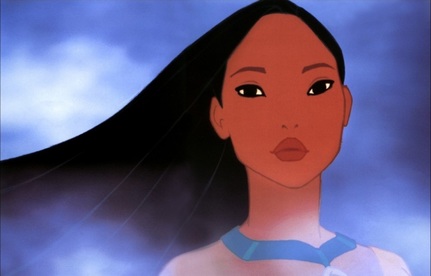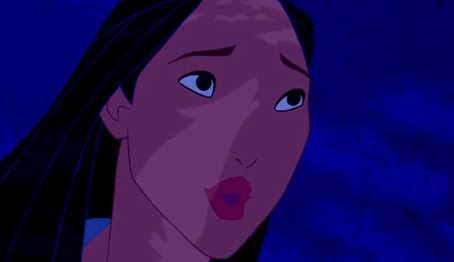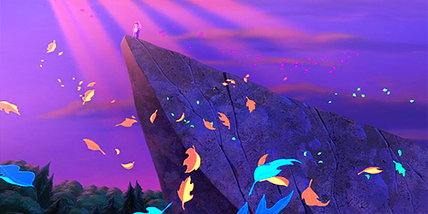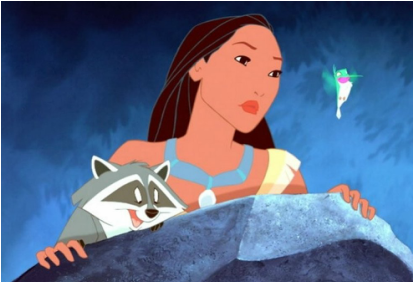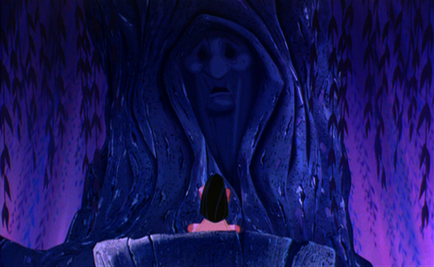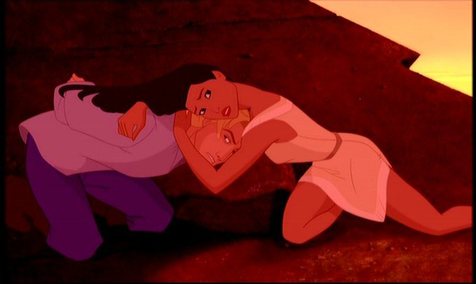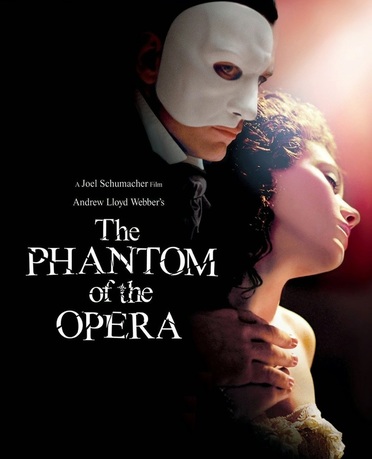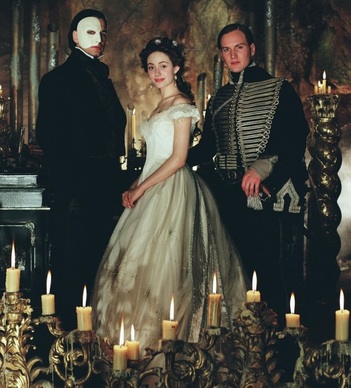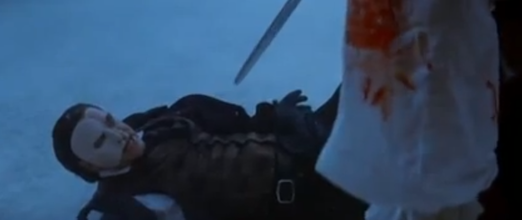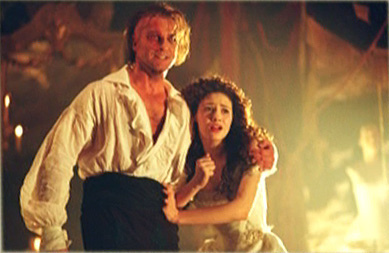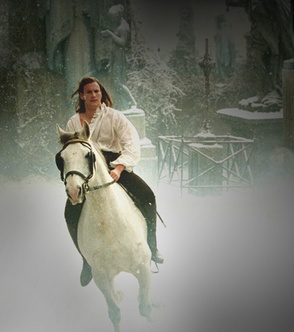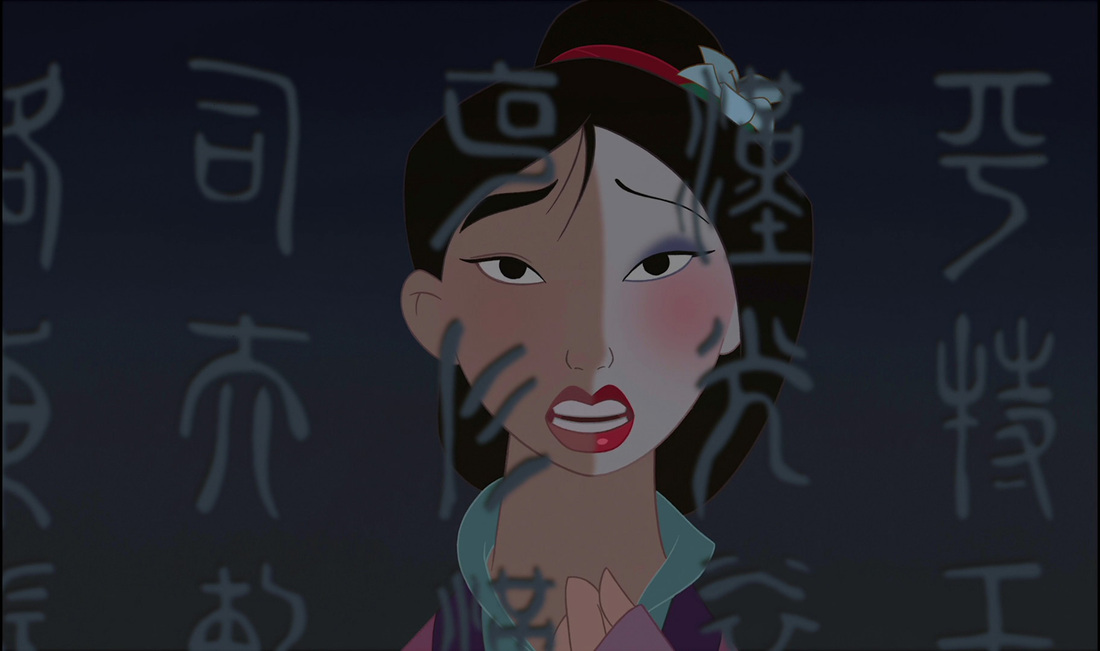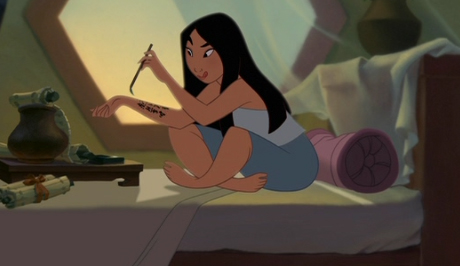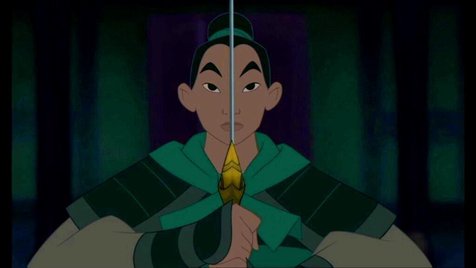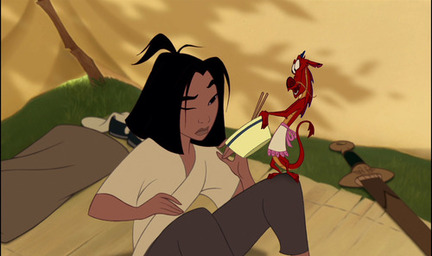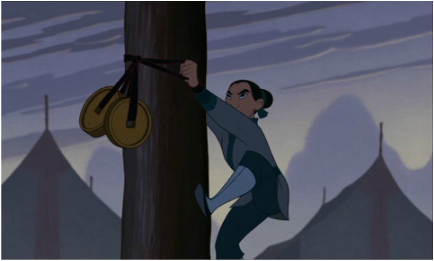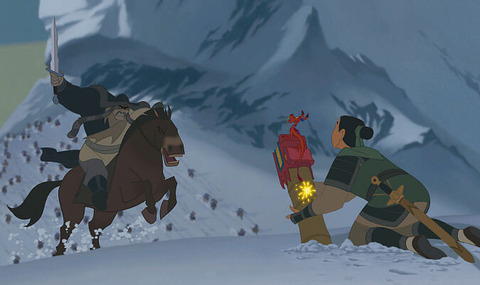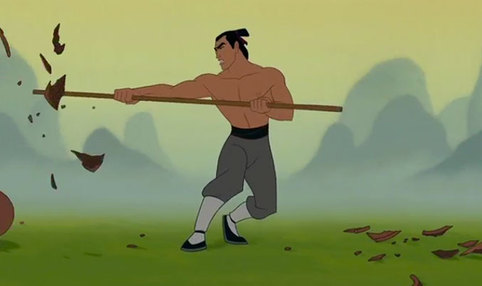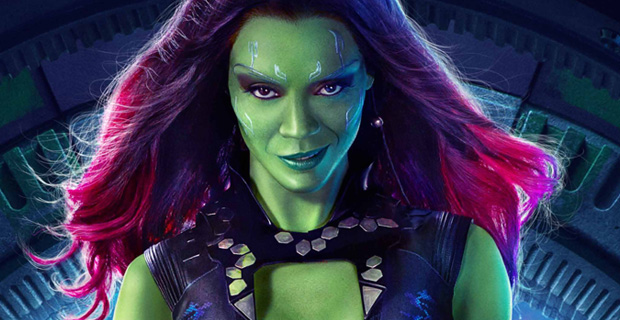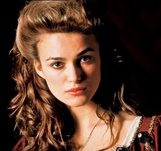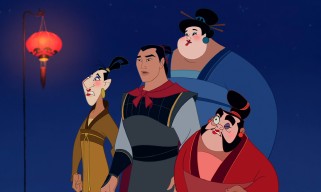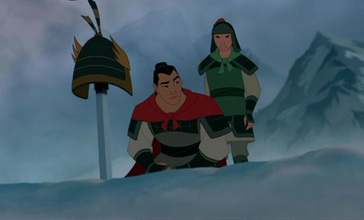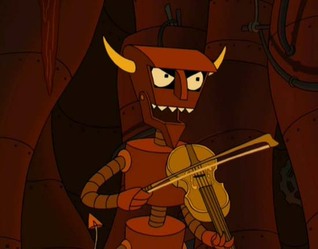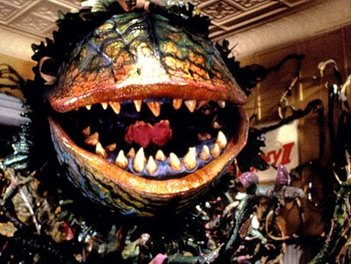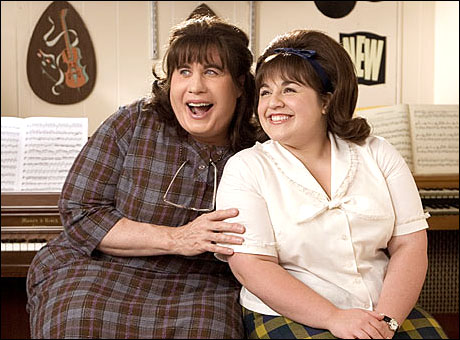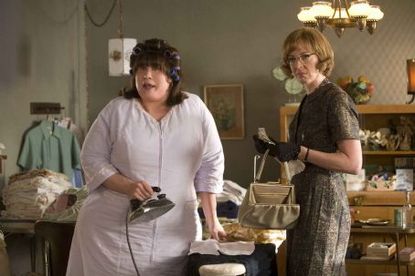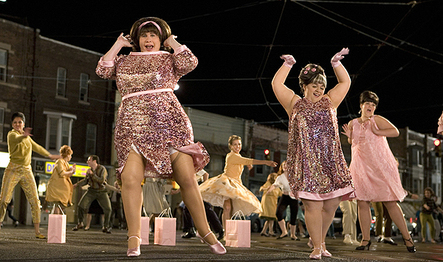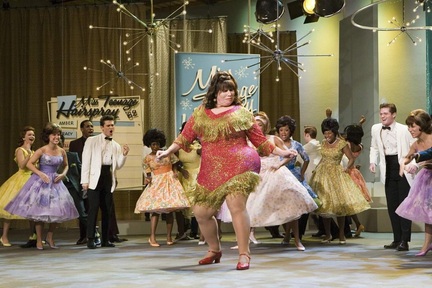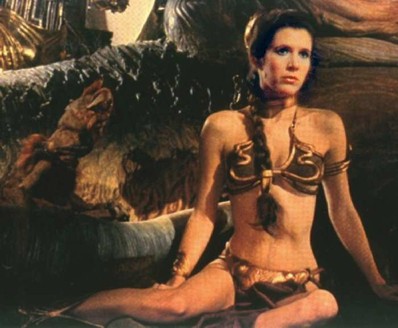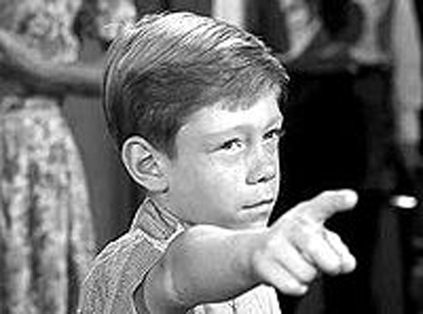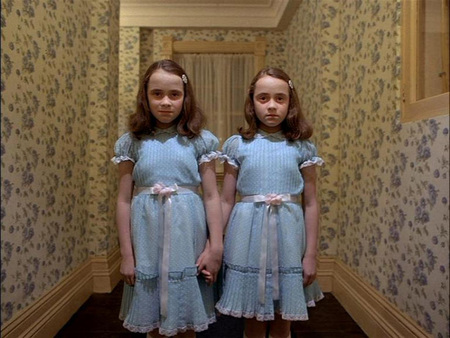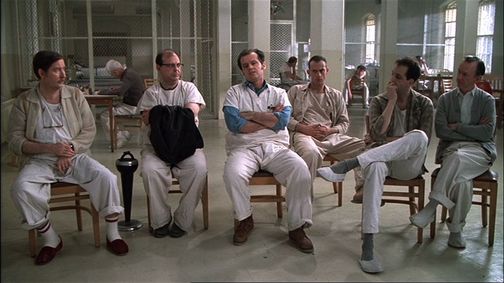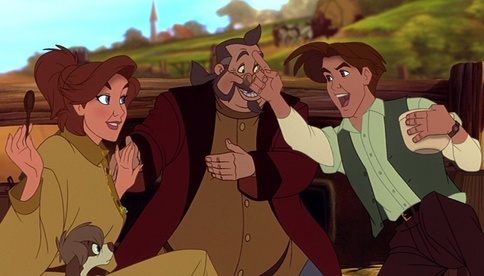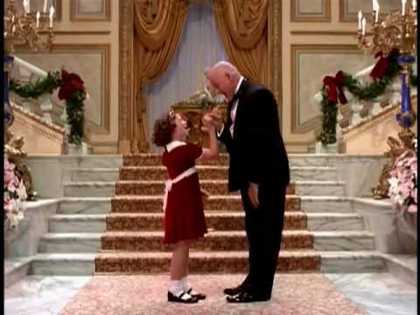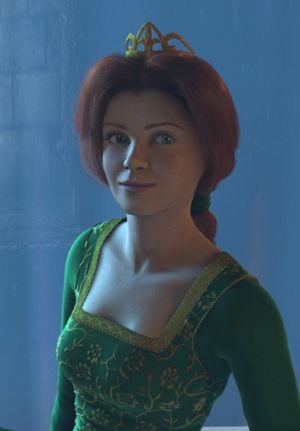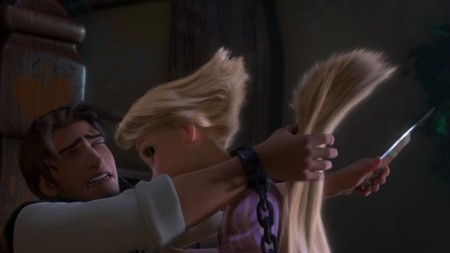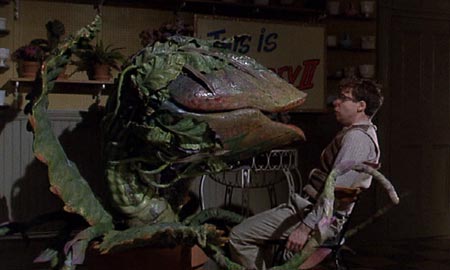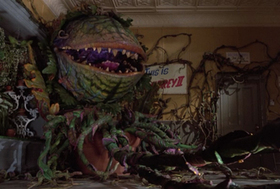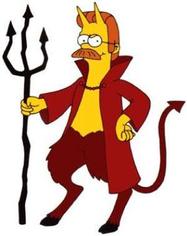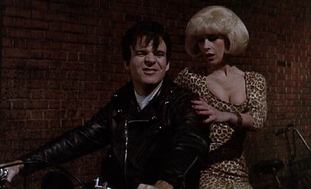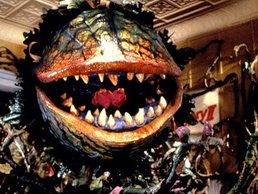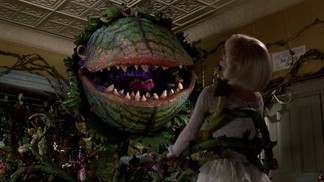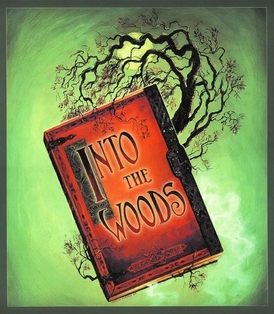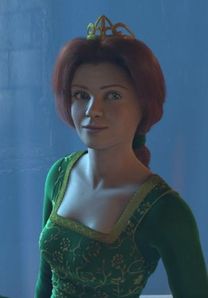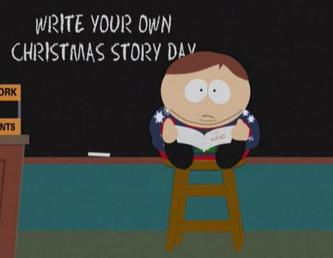Once again, for February this year, I’m counting down my favorite characters who by all rights shouldn't be favorites, and yet something about them never fails to win me over.
Click the links for Favorite Fictional Character (That I Shouldn't Like) #3, #4, and #5.
Next up, we've got one of the beloved Disney princesses of my childhood, but she’s not here for the usual reasons Disney princesses can be difficult to defend.
Why I shouldn't like her:
Mostly because this is an incredibly awkward movie to watch once you're old enough to comprehend things like cultural sensitivity. Disney definitely gained a lot of good intentions between the days of Peter Pan and Pocahontas, but it hadn't quite gathered the competence to back up those good intentions.
Admittedly, Pocahontas isn't a story you want to strive for complete historical accuracy with, because then it would be about a woman who died of smallpox at the age of about twenty-two, after a brief political overseas marriage, and then became best known for a posthumous rumor started by a much older man about how she was totally infatuated with him back when they possibly crossed paths, when she was ten.
At least, we can all hope it was only a rumor.
It's the legend of Pocahontas, the forbidden-love-in-spite-of-the-differences concept, that makes a good movie.
Disney supposedly did its research before realizing exactly how much of the history would be unusable, but somewhere along the way, someone skipped over reasonable solutions like using as much accurate window-dressing that would work in a romantic children's movie as possible, or scrapping the project entirely in favor of something less problematic, and instead the strategy somehow became to include as much randomly generated imitation mysticism as could fit in the script, cloaked in somberly dignified earnestness.
This is the same sin of passing off made up gibberish in a fictional representation of a real-life human culture as last week's example, only exponentially worse, since this one’s connected with, you know, real-life genocide.
Okay, enough depressing reality.
Stripped of any real world context and viewed in a bubble, Pocahontas still has the significant storytelling problem that Pocahontas is always right.
Always. She has an infallible moral compass.
She never has anything of substance to learn from her romantic foil, only things to teach him. She's already perfect in every possible way.
Other characters complain about her unreliability and recklessness, but we're not seriously expected to see those as flaws when said other characters are standing in the way of love and peaceful cooperation. The closest Pocahontas ever gets to imperfection is needing the occasional pep talk from her magic willow tree mentor before making a decision, but even that demonstrates the superior wisdom she derives from her closeness with nature.
Why I love her anyway:
I'm going to date myself pretty dramatically here for a moment. When I was five years old, Pocahontas hit theaters. This was before Mulan, before Princess and the Frog, and way before I processed the concept that movies not made by Disney existed as anything but a curiosity for old people.
I missed out on the movie theater window for some reason and had to endure a five-year-old’s eternity of all my friends talking, singing, and dressing up in celebration of the incomparable awesomeness of their new favorite heroine, until the day the big display of VHS copies finally appeared along the back wall of the Blockbuster, so I could find out for myself.
At long last, I put in the tape, pressed play, and had my pink-loving, tiara-wearing mind utterly blown.
Five-year-old me wasn't an analytical fiction blogger. She had never heard the word “feminism.” She hadn't given a whole lot of thought yet to why Snow White and Sleeping Beauty and Cinderella weren't quite as much fun as their younger sisters. She didn't understand the history or present of gender prejudice, no more than she knew about the rules of character development or what happened after the founding of the real life Jamestown. She probably couldn't have told you exactly what it was about Pocahontas that compelled her memorize every word, note, and image of it until she could act it out over and over again with the help of her dolls, and some furniture and couch cushions when she ran out of dolls.
But I am, I do, and I can.
Pocahontas wasn't technically the first Disney princess to rescue a prince; Belle, Ariel, and even Jasmine all sort of beat her to that distinction, but only in passing, token moments in larger action sequences, before or after their princes’ flashier, always more plot-essential rescues of them.
Pocahontas was the first Disney princess ever to rescue the prince as the single climactic action of the story.
She doesn't just get her token heroic moment. Her heroism is the point.
I can explain that now, and I can't overstate the revelation it was at the time or the power she had for me because of it.
Pocahontas is brave and principled and has nature superpowers and doesn’t do what she’s told, but most miraculously of all, she never gets taken down a peg because of it and forced to wait for someone else's pardon and rescue like a good princess.
She’s a musical heroine who gets two ballads of her own and a powerful, determined share of the going-to-war montage song, which may be an odd point of appeal, but those songs are one of my forever soft spots, and she wins a guy whose non-saving of her in no way makes him less dreamy.
Sure, she has to give him up to become a diplomatic translator, but he asks her to stay with him, so it counts.
Adulthood and the study of storytelling have given me a taste for more complex, less cloyingly perfect protagonists, but that first feeling of discovering a heroine who was completely the hero of her story is something I'll never forget.
One might even theorize that it helped create the F.J.R Titchenell you know today.
Agree? Disagree? Comments are always welcome! Or keep up with my fictional musings by joining me on Facebook, on Twitter, or by signing up for email updates in the panel on the right!
